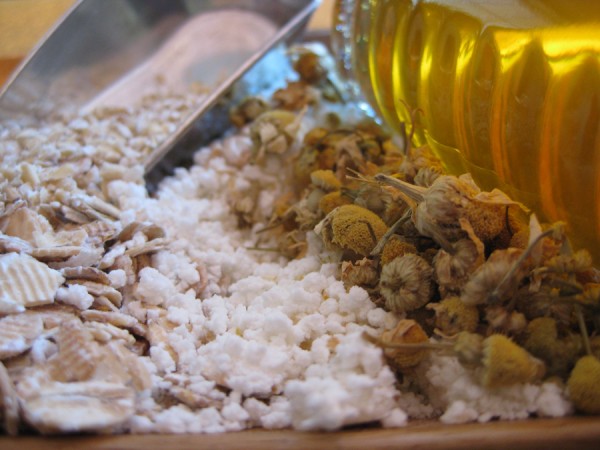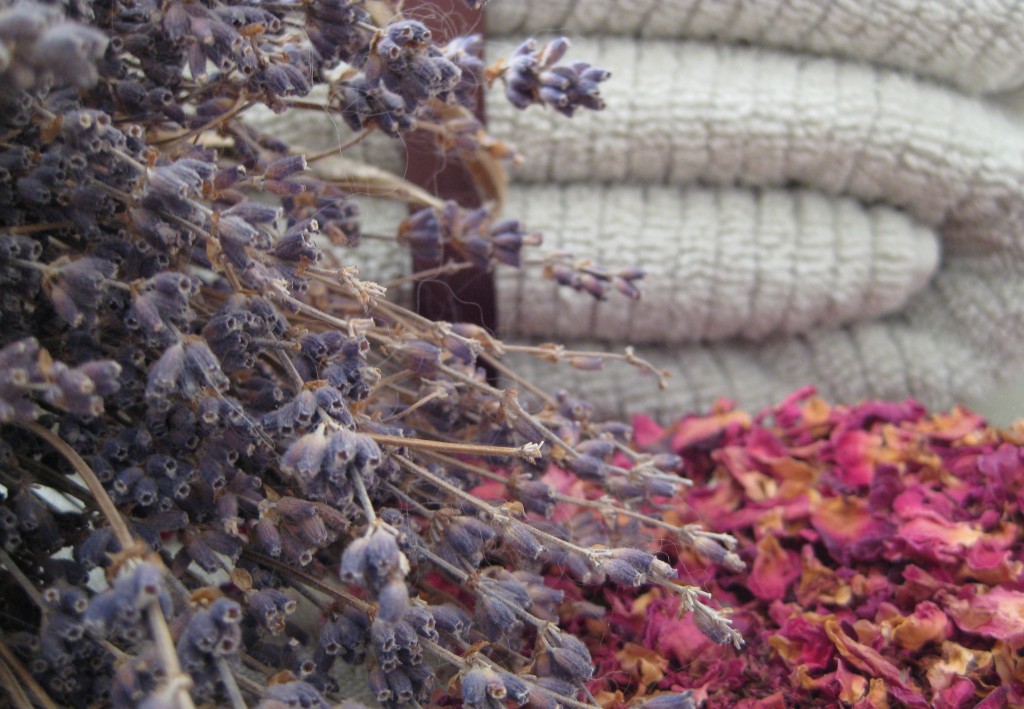Original publish date: January 19, 2012
 Last nerve frayed? Winter weather dried out your skin? No problem. The chamomile in this mask has natural anti-inflammatory properties that will ease your nerves. The honey is a natural humectant, pulling moisture from the air and drawing it to your skin. It will leave you feeling calm and moisturized, and who wouldn’t want that?
Last nerve frayed? Winter weather dried out your skin? No problem. The chamomile in this mask has natural anti-inflammatory properties that will ease your nerves. The honey is a natural humectant, pulling moisture from the air and drawing it to your skin. It will leave you feeling calm and moisturized, and who wouldn’t want that?
You’ll need:
2 1/2 tsp. powdered milk
2 tsp. ground oatmeal
1 tsp. honey
2 chamomile tea bags
Brew…
Place the chamomile tea bags in your favorite mug and pour in 1 cup boiling water. Put a saucer over the cup to trap the escaping steam, which is now infused with the beneficial constituents of the chamomile flowers. Let this steep for 10 minutes.
After the tea is done steeping, remove the tea bags, squeeze out any excess water and place them in the refrigerator to cool.
Mix…
In a small bowl, mix together the powdered milk, ground oatmeal, honey and 2 tsp. of the warm chamomile tea. The warm water will draw out the beneficial elements of the oatmeal and milk, while liquefying the honey, creating a thin paste.
Relax…
Using your fingers, apply the oatmeal mixture to your forehead, then gently sweep down your temples, under your eyes and around your nose. Move your fingers in small circles as you apply more mixture to your cheeks, around your mouth and down your neck.
As you apply the mixture, pay attention to your breathing, take slow, calm breaths. Enjoy the light scent of chamomile and honey as you inhale through your nose and exhale through your mouth. Feel the warm sensation of the oatmeal mixture as you gently spread it over your face.
When you’ve finished applying the mask, rinse your hands in warm water. Get the cooled tea bags from the refrigerator, then lie down with the tea bags placed over your closed eyes. Relax for 20 to 30 minutes and let the chamomile calm your skin and soothe your nerves.
And Rinse.
To rinse the mask off, use warm water and a wash cloth. You do not need to use soap or a cleanser. The mask will rinse clean without them and you want to allow the delicate essences of the chamomile flowers to linger on your skin. The honey will rinse off, leaving your skin feeling moisturized, without clogging your pores. Pat your face dry.
Dispose of (or compost!) the tea bags and finish your facial by sitting with a good book or magazine and sipping on the rest of the chamomile tea that you brewed earlier. If you’ve got the ingredients on hand, this entire process takes less than 45 minutes and can really replenish your mind and body after a draining day.
Happy brewing!

P.S. Who knew? Tea vs. Tisane
Did you know that in order for a beverage to be called “tea,” it actually needs to have tea leaves in it? So all of the herbal brews, like the chamomile tea you just made, are not actually teas…they’re tisanes, water infused with herbs. But seriously, who would ever call them that?? Chamomile tisane?






 Also dominating the landscape are the beautiful purple flowers of the Chapman’s Blazing Star plant, also known as Chapman’s Gayfeather (Liatris chapmanii). These pretty flowers are typically a pretty purple color but every now and then, a white one will bloom. Among the sea of purple we found two of these white blooms very near each other. It felt like something special to see these rare flowers. Ian told us that seedpods from
Also dominating the landscape are the beautiful purple flowers of the Chapman’s Blazing Star plant, also known as Chapman’s Gayfeather (Liatris chapmanii). These pretty flowers are typically a pretty purple color but every now and then, a white one will bloom. Among the sea of purple we found two of these white blooms very near each other. It felt like something special to see these rare flowers. Ian told us that seedpods from 







